The Wheel of Year is a fundamental aspect of Wicca, a modern pagan, witchcraft religion. It is a cyclical representation of the changing seasons, marked by eight sabbats, or religious celebrations. These sabbats spread throughout the year and mark the turning points of the solar cycle.
Wheel Of Year Origins
The Wiccan Wheel of the Year is an ancient tradition rooted in the cycles of nature and the changing seasons. Its origins lay back to pre-Christian Europe, where pagan communities celebrated the solstices, equinoxes, and other significant dates in the agricultural calendar. With the rise of Christianity, these traditions were suppressed and demonized as “witchcraft.”
However, in the 20th century, Wicca become a modern spiritual movement that sought to reclaim and revive these ancient practices. Today, Wiccans and other modern pagan communities around the world celebrate the Wiccan Wheel of Year. A lot of people see these Sabbaths as a way to connect with the rhythms of the natural world and honor the cycles of birth, growth, death, and rebirth.
Yule: Mystical Wheel and the Winter Solstice
The Wheel of Year starts with The Spring Equinox and is the celebration of Winter Solstice. Yule occurs around December 20th to 23rd. This is the shortest day and longest night of the year and represents the rebirth of the sun. Wiccans celebrate this sabbat by lighting candles, decorating with evergreens, and feasting with loved ones.
View this post on Instagram
Imbolc: Awakening to New Beginnings
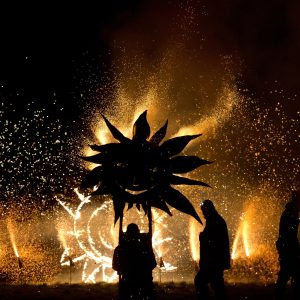
Next is Imbolc, which takes place on February 1st or 2nd and marks the start of spring. This sabbat symbolizes the growth of new life. Wiccans celebrate Imbolc by lighting candles, creating Brigid crosses, and making offerings to the goddess.
Ostara: Springing into Action
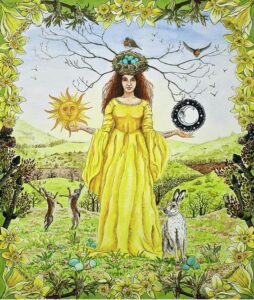
Ostara is actually the Spring Equinox. It takes place around March 20th to 23rd. This sabbat represents the balance of light and dark, as day and night are of equal length. Wiccans celebrate Ostara by planting seeds, decorating eggs, and celebrating the return of spring.
Beltane: Unleashing the Power of Nature
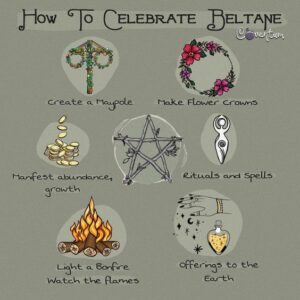
Beltane, which occurs on May 1st, is the start of summer and is a celebration of fertility and growth. Wiccans celebrate Beltane by dancing around the Maypole, lighting bonfires, and celebrating the union of the goddess and god.
Litha: Shining a Light on the Summer Solstice
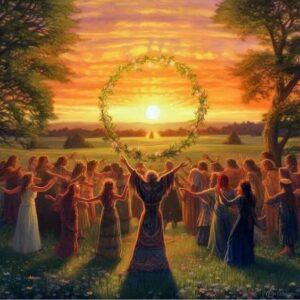
Litha refers to the Summer Solstice, which takes place around June 20th to 23rd and is the longest day of the year. This sabbat represents the height of summer and is a time for harvesting crops. Wiccans celebrate Litha by lighting bonfires, decorating with flowers, and offering thanks to the sun.
Lammas: Harvesting Abundance
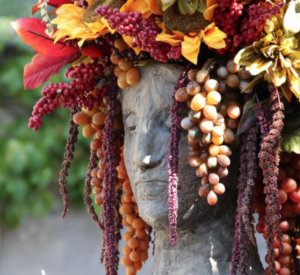
Lammas or Lughnasadh takes place on August 1st and marks the start of the harvest season. This sabbat signifies that it s a time for gathering crops and preparing for the winter. Wiccans celebrate Lammas by baking bread, harvesting crops, and making offerings to the god.
Mabon: Finding Balance in the Equinox

Mabon is the celebration of the Autumn Equinox, and it takes place around September 20th to 23rd and marks the start of autumn. This sabbat represents the balance of light and dark, as day and night are of equal length. Wiccans celebrate Mabon by giving thanks for the harvest, decorating with autumn leaves, and celebrating the cycle of life.
Samhain: Journeying Beyond the Veil
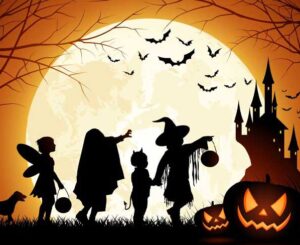
Samhain occurs on October 31st. It marks the start of winter. However, this time of the year is also the time when the veil between the living and the dead is considered to be at its thinnest. This sabbat is a time for honoring ancestors and is associated with the goddess Morrigan. Wiccans celebrate Samhain by lighting candles, decorating with autumn leaves, and holding feasts for the dead.
In conclusion, the Wheel of Year is an essential aspect of Wicca and provides a framework for celebrating the changing seasons and marking important points in the solar cycle. Each sabbat has its own unique significance and provides a time for Wiccans to connect with nature, the divine, and their ancestors.

